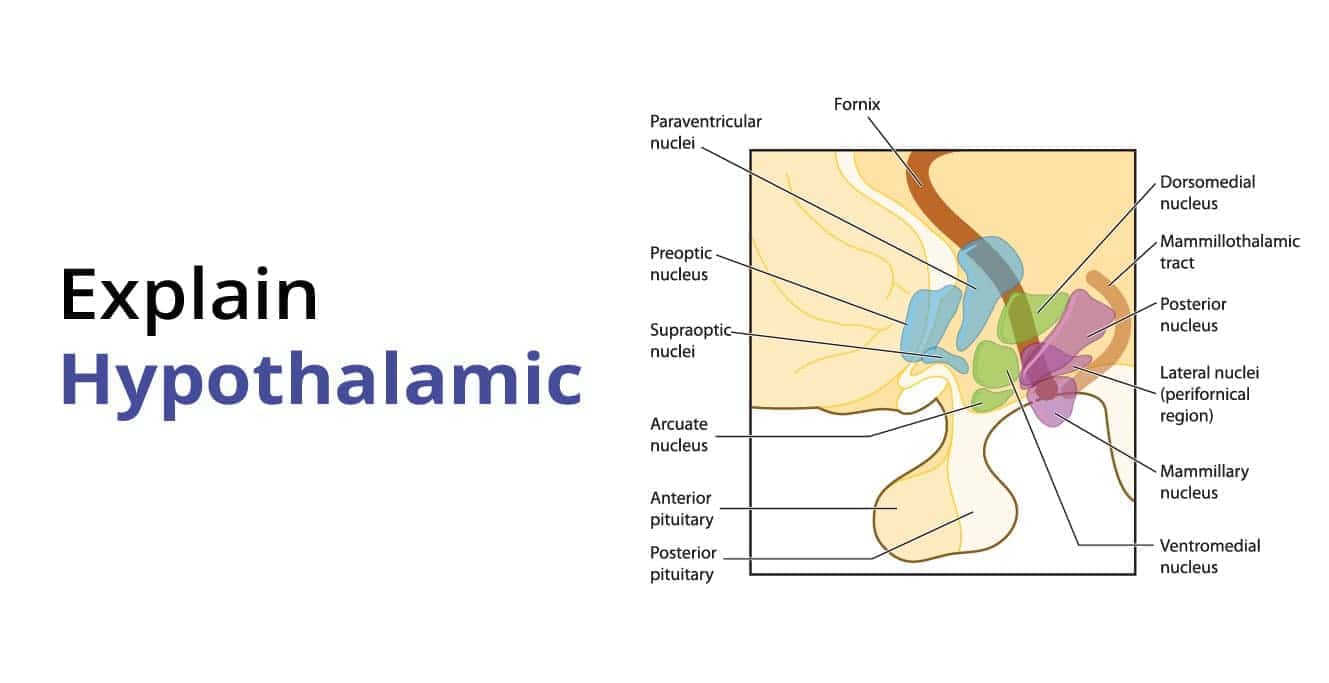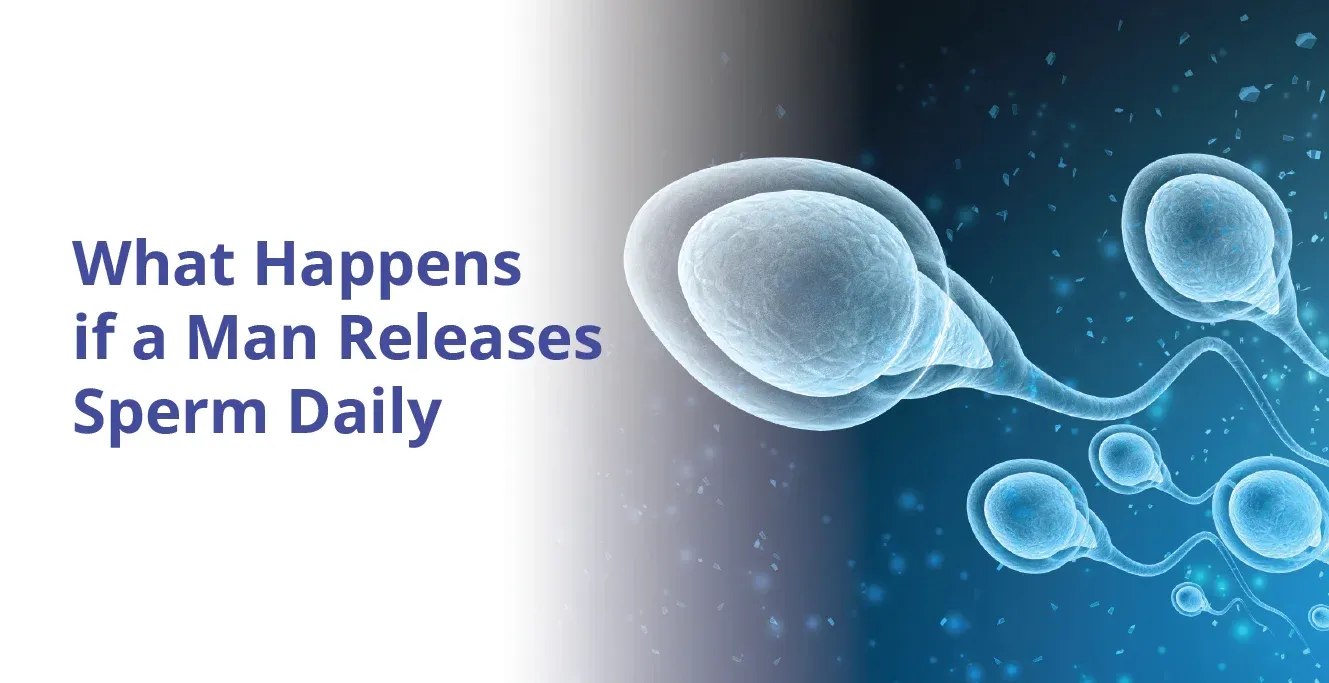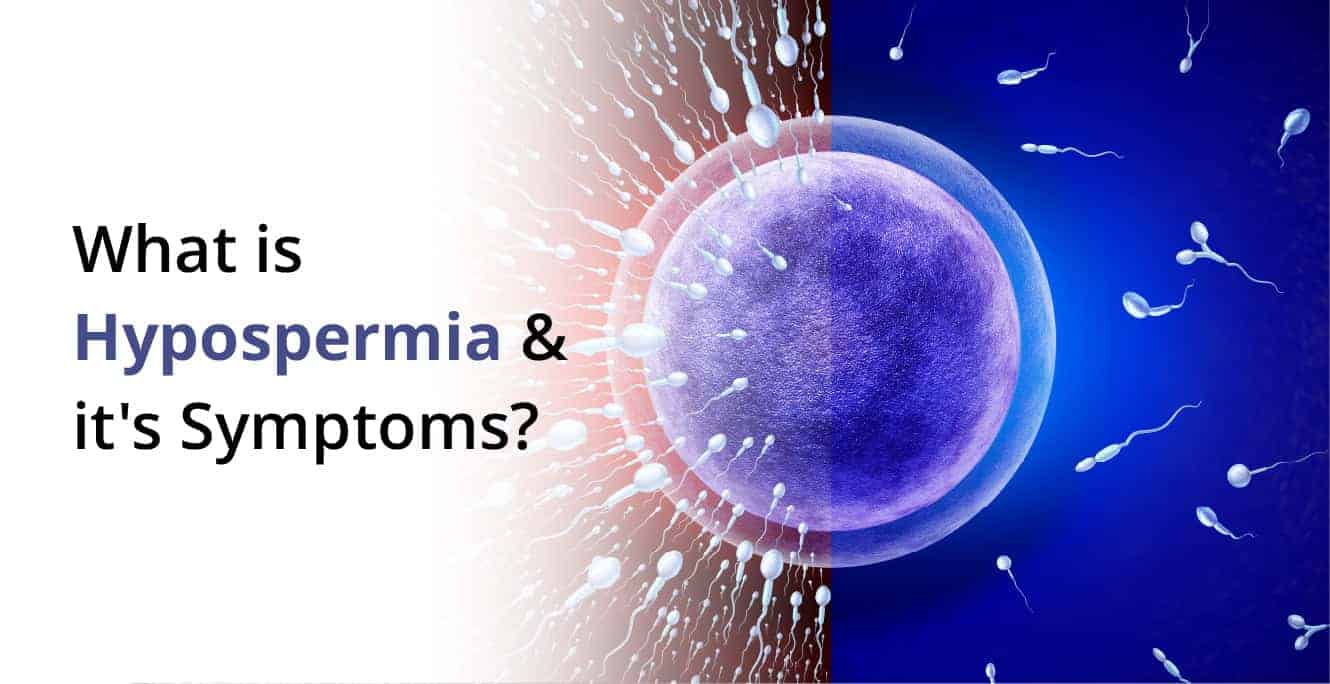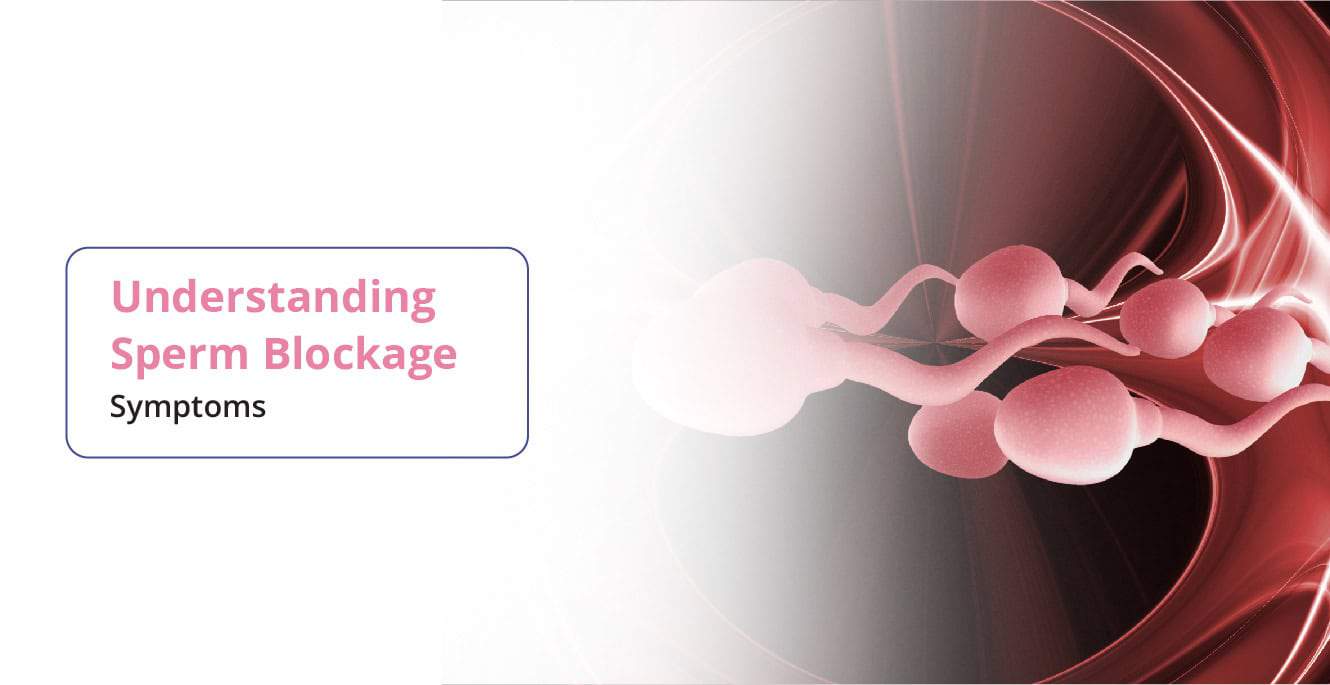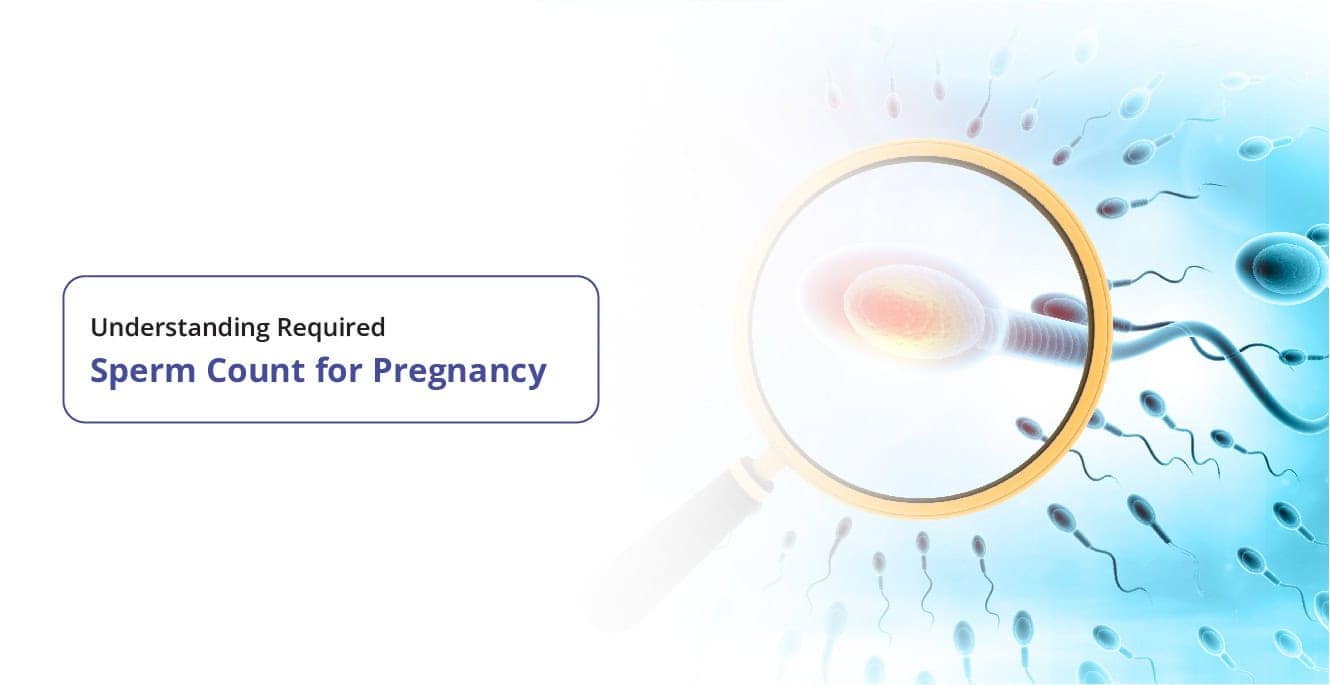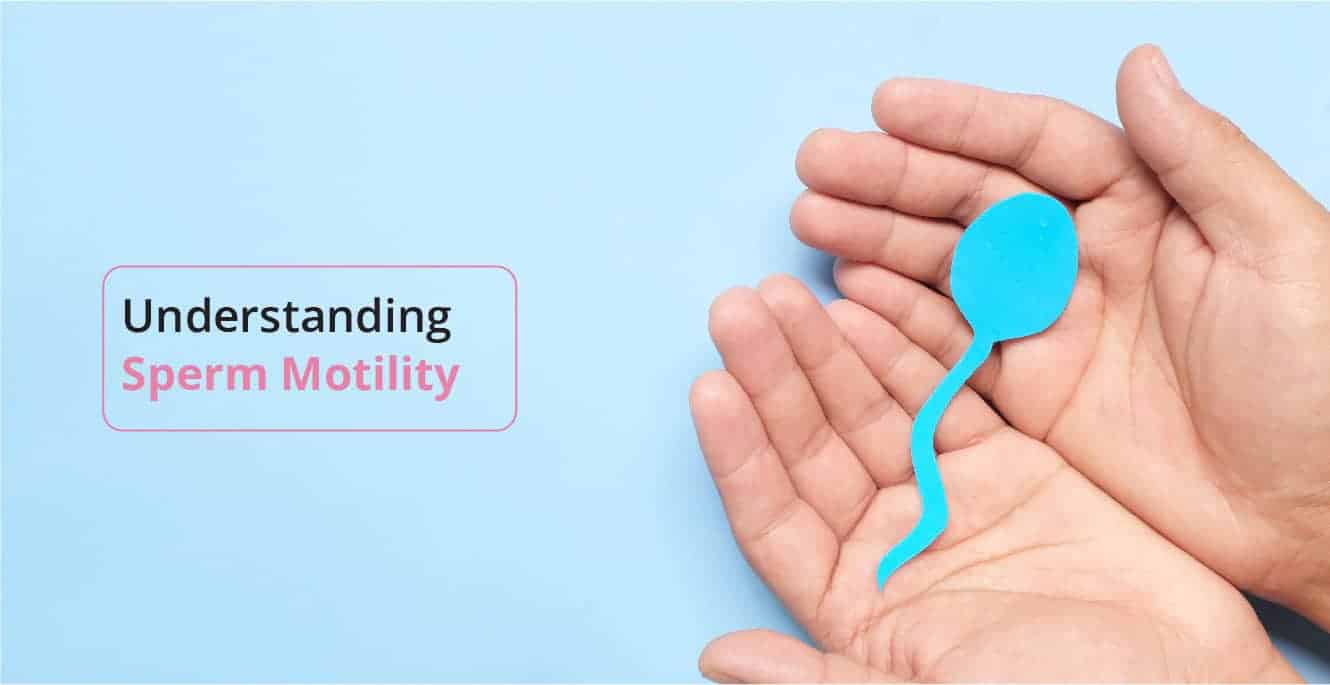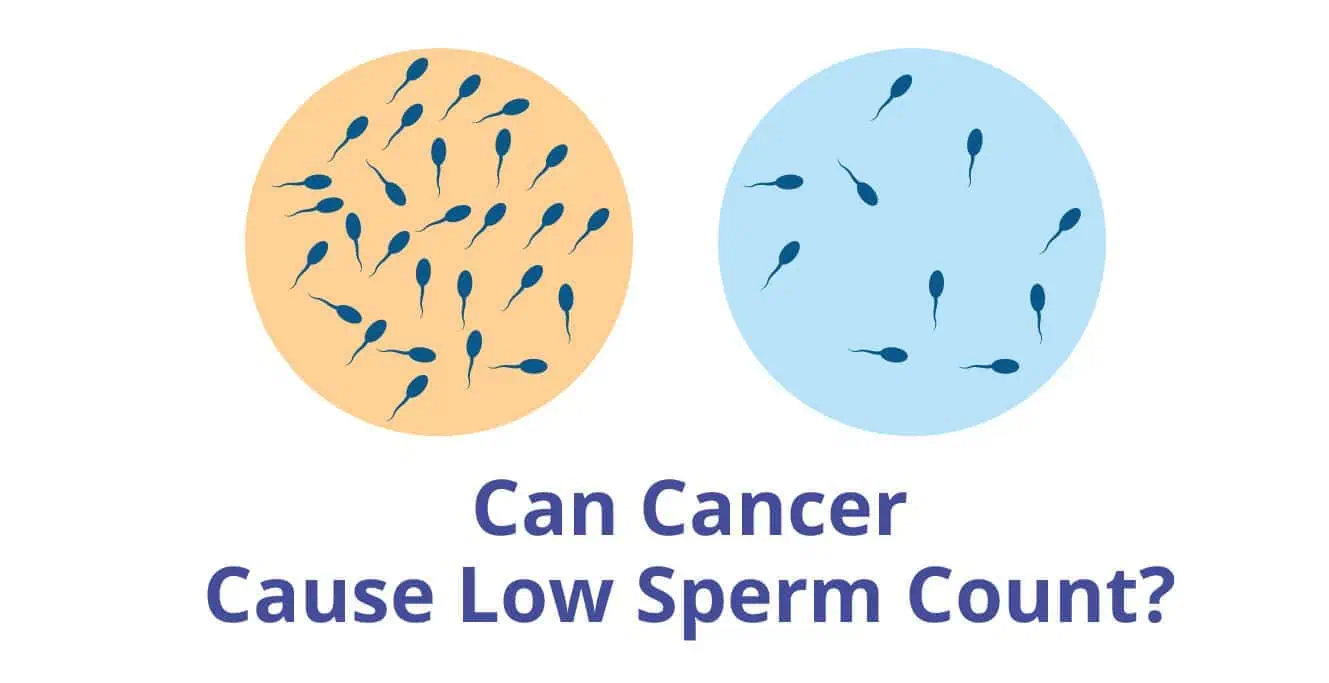The hypophyseal system is a channel connecting the adenohypophysis with the hypothalamus. It nourishes the hypothalamic nuclei, which play a vital role in regulating your endocrine system and its autonomic and somatic responses. It is also known as hypothalami-hypophyseal portal circulation.
The hypophyseal system represents a portal circulatory system. It maintains interaction between the anterior pituitary and the hypothalamus, which induces suitable responses through the neuro-endocrine pathway to meet various physiological situations.
It is a crucial pathway since it coordinates all the neural-endocrinal activities throughout the body.
Hypothalamic nuclei: Overview
The hypothalamus is a collection of multiple nuclei that performs the following roles:
- Regulation of the endocrine system (periventricular zone nuclei)
- Regulates autonomic functions (medial nuclei)
- Regulates somatic functions (lateral nuclei)
Lying centrally in the brain cavity, it maintains connectivity with the following organelles:
- Amygdala (via the stria terminalis)
- The brain stem (via the dorsal longitudinal fasciculus)
- The cerebral cortex (via the median forebrain bundle)
- Hippocampus (via the formix)
- Pituitary gland (via the median eminence)
- Retina (via the retinohypothalamic tract)
- Thalamus (via the mammillothalamic tract)
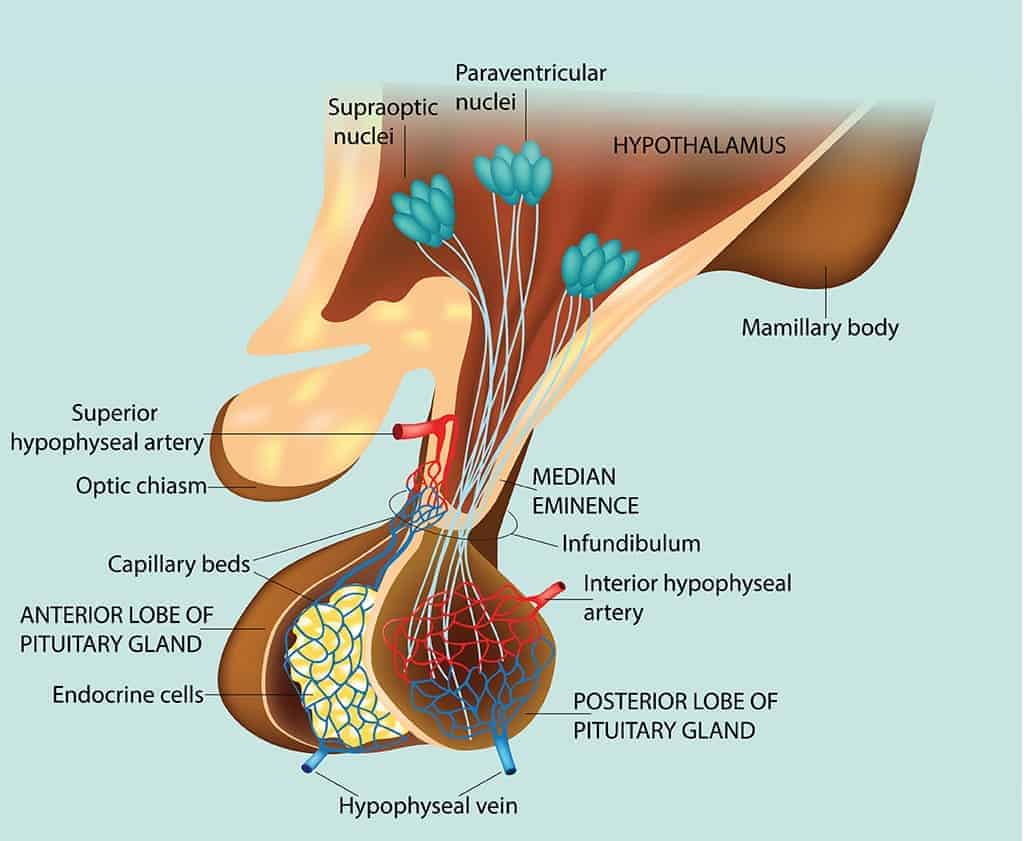
Hypophyseal portal circulation: Overview
The hypophyseal portal circulation connects the anterior pituitary gland with the hypothalamus. Also known as the hypothalamic-hypophyseal portal system, it helps control the endocrine regulatory mechanisms in the adenohypophysis region of the pituitary gland.
The hypothalamic nuclei produce multiple releasing or inhibiting hormones (TSH, FSH, GnRH). These either stimulate or inhibit the secretion of the responsible hormones from the adenohypophysis through a feedback mechanism.
The hypophyseal portal circulation receives these signals from the hypothalamus. Then, it carries the stimulating/inhibitory message to the anterior pituitary system, which releases the hormone for the target organ.
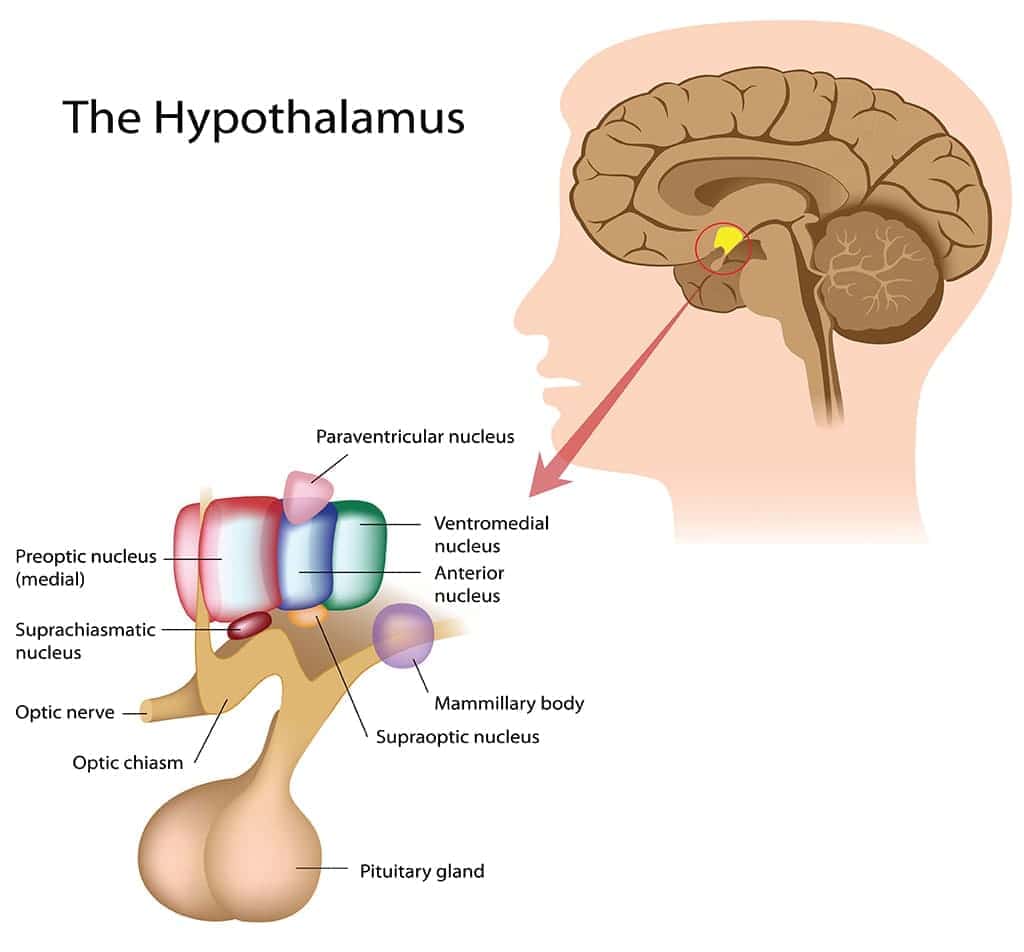
What is the role of hypothalamic nuclei in the body?
The hypothalamus is called the master of the master gland. Its ability to coordinate all neural signals using autonomic, somatic and endocrine mechanisms makes it a seamless control centre. The hypothalamic nuclei functions as a moderator in the human body. This includes:
- Internal homeostasis (maintaining body temperature)
- Balancing blood pressure
- Managing hunger and thirst (satiety)
- Emotional mood and psychological well-being
- Inducing or suppressing the sex drive
- Monitoring the sleep cycle
The hypothalamic nuclei and their functions coordinate the following functions of the autonomic nervous system (ANS):
- Breathing rate
- Heartbeat
The hypothalamus produces many hormones. Some of them get stored in the posterior pituitary for further release, while the rest hit the anterior pituitary through the hypophyseal circulation, further secreting hormones.
What is the role of the hypophyseal portal system?
- It transmits endocrine messages to the adenohypophysis for stimulation or inhibition of any hormone complexes (through fenestral capillaries)
- The fenestral capillaries play a crucial role in maintaining the connectivity (an artery cannot supply blood/a vein cannot receive blood directly in a portal circulation)
- Hypothalamic nuclei secrets neurotransmitters which travel as endocrine signals through the hypophyseal portal system towards the adenohypophysis
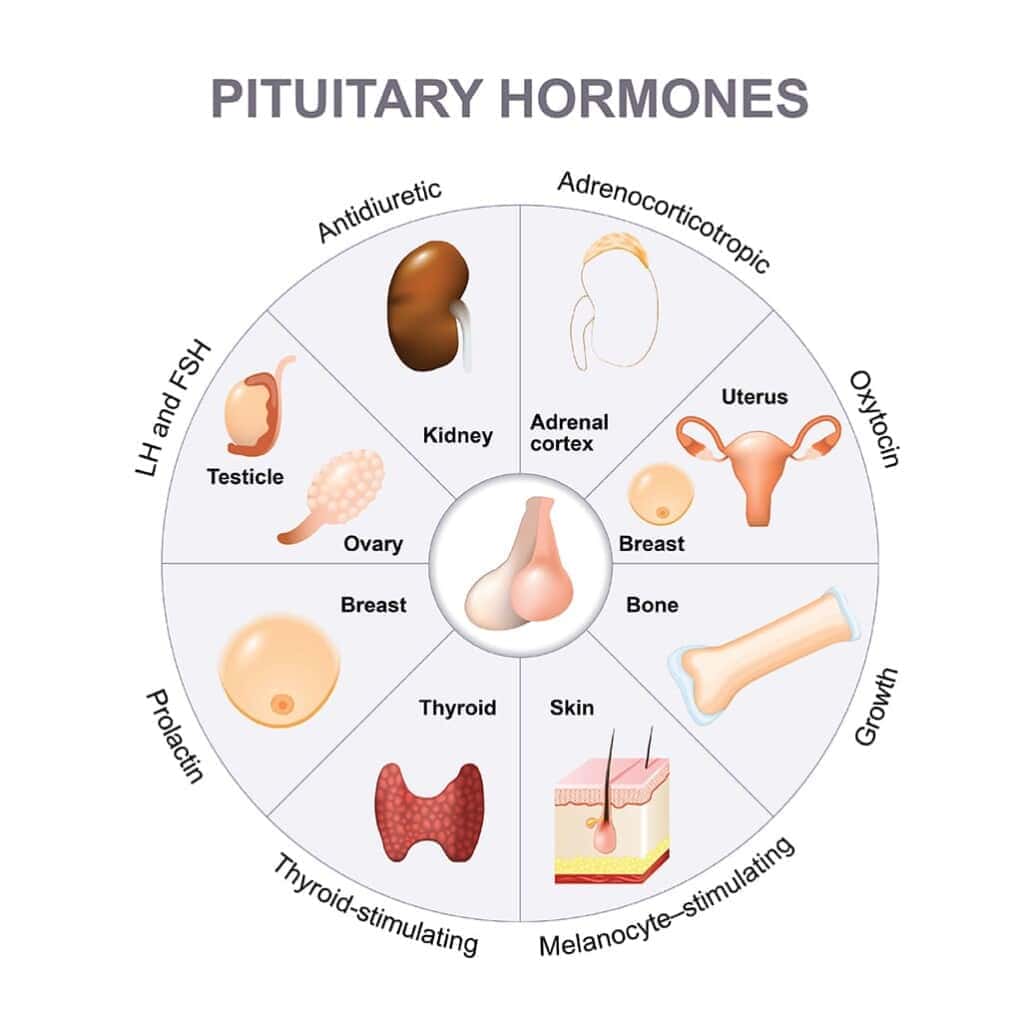
Hypothalamic nuclei: Hormones secreted from the hypothalamus
The hypothalamic nuclei produce various releasing hormones. The hypophyseal portal circulation channels them to the adenohypophysis for producing hormones. Here we discuss the former’s hormones:
- Growth hormone-releasing hormone (GHRH)
- Gonadotropin-releasing hormone (GnRH)
- Corticotrophin-releasing hormone (CRH)
- Thyrotrophin-releasing hormone (TRH)
- Dopamine
Functions of hypothalamic nuclei hormones
These releasing hormones have a crucial role in maintaining homeostasis. Here’s a brief description of their functions:
- GHRH stimulates the secretion of GH (Growth hormone), which enhances the growth and the extension of long bones and muscles.
- GnRH helps secrete LH (Luteinizing hormone) and FSH (Follicle-stimulating hormone), which sets in the menstrual cycle in females while males experience spermatogenesis (sperm production)
- CRH triggers the production of ACTH (Adreno Cortico trophic hormone), which releases cortisol from the adrenal gland and plays a crucial role in immunity and metabolism.
- TRH leads to the secretion of the TSH (Thyroid-stimulating hormone) responsible for secreting T4 (tetra-iodothyronine) and T3 (tri-iodothyronine)
- The hypothalamic nuclei also secrete dopamine. It’s antagonistic to prolactin secretion necessary for milk formation.
Besides, the hypothalamus also secretes vasopressin (ADH) and oxytocin. These hormones get stored in the posterior pituitary gland.
Clinical significance of the hypothalamic nuclei and hypophyseal portal system
- The hypothalamus moderates food intake using the satiety centre as a mechanism to counter obesity.
- It induces an acute-phase immune response to destroy pathogens incubating in the body (fever).
- It controls dopamine-prolactin balance in lactating women.
- It induces natural growth, development and maturity through the proper functioning of the hypothalamic nuclei.
- It balances blood sugar levels and ADH secretion to prevent diabetes development.
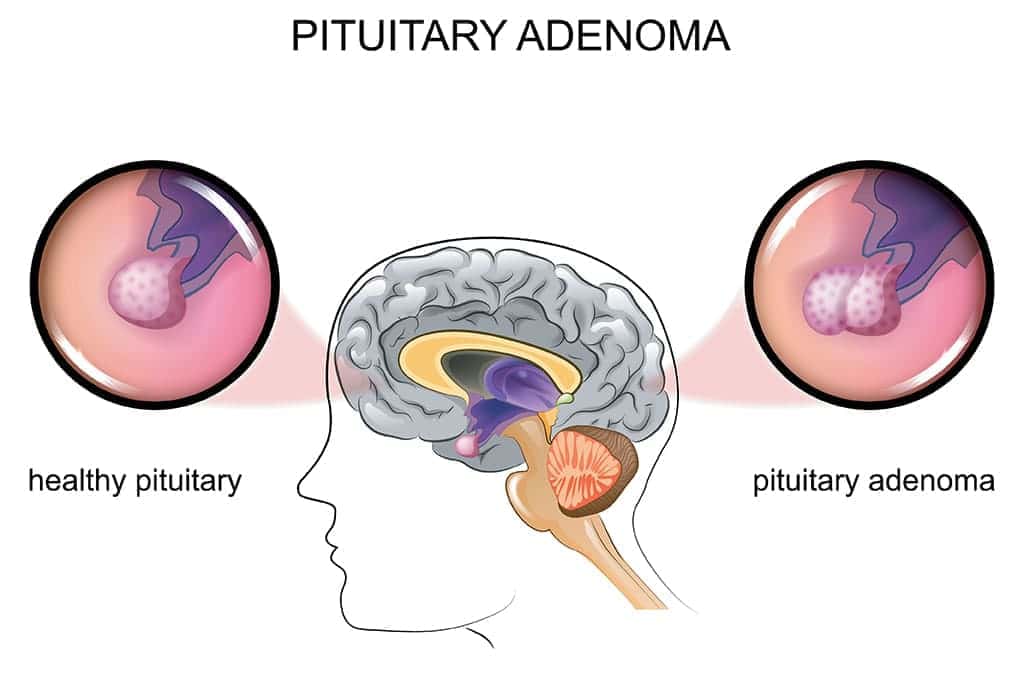
Hypothalamic nuclei: Disorders and Illnesses
The hypothalamic nuclei can get damaged from the following possibilities:
- Blunt trauma
- Pathogenic infection
- Brain aneurysm
- Side effects of anorexia and bulimia
- Inherited defects
- Brain damage from multiple sclerosis
- Side effects of medicinal therapy
It can lead to various hypothalamic dysfunctions, like:
- Hormonal disorders (acromegaly, diabetes insipidus, hyperprolactinemia, hypopituitarism)
- Genetic disorders (Kallman syndrome, Prader-Willi syndrome)
- Central hypothyroidism (pituitary adenoma and hypophysitis)
- Functional hypothalamic amenorrhoea

Hypothalamic disease symptoms: How to spot hypothalamic disease?
Any potential hypothalamic dysfunction will show the following symptoms in advance:
- Abnormal blood pressure
- Irregular breathing rate/heartbeat
- An abrupt change in body weight
- Loss of bone weight (frequent bone injury from a minor blow)
- Irregular menstrual cycle
- Sleeplessness (insomnia)
- Frequent tendency to pee (polyuria)
- Unable to concentrate or feelings of anxiety
Conclusion
The hypothalamic nuclei coordinate all autonomic, somatic, and endocrinal phenomena in the human body. It depends on the hypophyseal portal system to communicate with the adenohypophysis. The definition of overall wellness is satisfied with the proper functioning of the hypothalamus.
Don’t ignore sudden unexplained anxiety or feelings of unwellness with no physical ailments. These could be a prevalent sign of underlying hypothalamus dysfunction. Seek immediate clinical help at the earliest.
Interested to learn more about potential disorders related to the hypophyseal portal system? Visit your nearest Birla Fertility and IVF clinic or book an appointment with Dr. Prachi Benara for expert guidance.
FAQs:
1 What causes hypothalamic dysfunction?
Hypothalamic dysfunction could be a potential side effect of a blunt head injury. It could also be from underlying complications (disorders) affecting the hypothalamus.
2 What is the location of the hypothalamus?
The name of the hypothalamus indicates its position (lying below the thalamus). The hypothalamic nuclei lie above the pituitary gland, sitting at the base of the brain on the brain stem.
3 What happens if the hypothalamus gets damaged?
Even the slightest damage to your hypothalamus can lead to potential hypothalamic dysfunction. This can lead to various hormonal disorders (acromegaly), causing irreparable damage.
4 What symptoms show hypothalamus dysfunction?
Hypothalamic disease symptoms can range from abnormal blood pressure to insomnia. While these are common symptoms of other characteristic disorders, it’s best to undergo a health check-up to diagnose the underlying reason.


